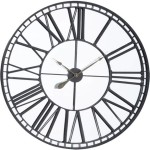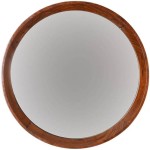Strategic Mirror Placement: Optimizing Room Aesthetics and Functionality
Mirror placement within a room is a critical design element that significantly impacts the perception of space, light, and overall aesthetic appeal. A strategically positioned mirror can enhance the positive attributes of a room while mitigating its shortcomings. Conversely, poorly placed mirrors can create unwanted reflections, visual clutter, and even detract from the room's intended atmosphere. This article provides a comprehensive guide to optimal mirror placement, exploring key considerations for various rooms and design objectives.
Prior to installing any mirror, a thorough assessment of the room's existing features is necessary. This includes identifying natural light sources, architectural details, furniture arrangement, and the room's primary function. Understanding these elements will inform the decision-making process and ensure that the mirror serves a purpose beyond mere reflection.
Maximizing Natural Light and Room Size
One of the most common reasons for incorporating mirrors into a room's design is to amplify natural light. Mirrors strategically placed near windows can reflect and distribute sunlight throughout the space, effectively brightening darker corners and reducing the need for artificial illumination during the day. The size of the mirror should be proportional to the size of the window and the amount of light desired. A large mirror placed directly opposite a window will yield the most dramatic results in terms of light distribution.
Furthermore, mirrors possess the ability to visually expand a room's dimensions. By reflecting the existing space, they create an illusion of greater depth and width. This is particularly beneficial in smaller rooms or those with limited square footage. To achieve this effect, consider placing a large mirror along an entire wall section. This technique effectively doubles the perceived size of the room. Alternatively, strategically placed smaller mirrors can create focal points and add visual interest while subtly expanding the space.
However, caution should be exercised when using mirrors to enhance room size in already large spaces. An excessively large mirror in a large room can create an overwhelming or disorienting effect. In these cases, smaller, decorative mirrors or mirrored accents may be more appropriate.
The direction a mirror faces is as crucial as its size and position. A mirror facing a blank wall will offer little benefit in terms of light or space enhancement. Instead, it should reflect a visually appealing element of the room, such as a piece of art, a window with a scenic view, or a carefully curated furniture arrangement. Avoid placing mirrors where they reflect clutter or unattractive features, as this will only amplify these elements and detract from the room's overall aesthetic.
Enhancing Aesthetics and Creating Focal Points
Beyond their functional benefits, mirrors can serve as decorative elements that enhance a room's aesthetic appeal. A well-chosen mirror can complement the room's existing décor, add visual interest, and create focal points that draw the eye. The style of the mirror should be consistent with the overall design theme of the room. For example, a sleek, modern mirror would be suitable for a contemporary space, while an antique-framed mirror would be more appropriate for a traditional setting.
Mirrors can be used to highlight specific architectural features within a room. For instance, a mirror placed above a fireplace mantel can draw attention to this focal point and create a sense of symmetry. Similarly, a mirror placed near a staircase can accentuate its architectural details and add visual depth to the space. In hallways, mirrors can reflect light and provide a sense of openness, making the space feel less confined.
The shape of the mirror can also contribute to the overall aesthetic of the room. Round mirrors soften angular lines and create a more organic feel, while rectangular mirrors add a sense of structure and formality. Experimenting with different shapes and sizes can help to achieve the desired visual effect.
When using mirrors as decorative elements, it is important to consider their placement in relation to other artwork and accessories. A mirror should not compete with other focal points in the room. Instead, it should complement them and contribute to a cohesive and harmonious design. Avoid placing mirrors directly opposite artwork, as this can create an overwhelming or confusing visual effect.
Practical Considerations for Specific Rooms
The optimal placement of mirrors varies depending on the specific room and its intended function. In bathrooms, mirrors are essential for grooming and hygiene. A large mirror above the vanity is a practical and functional choice. Consider installing a mirror with integrated lighting to provide optimal illumination for tasks such as shaving and applying makeup. Avoid placing mirrors directly opposite the toilet, as this can be aesthetically unappealing.
In bedrooms, mirrors are often used for dressing and checking one's appearance. A full-length mirror is a practical addition to any bedroom. It can be placed on a wall, or it can be freestanding. In bedrooms with limited space, consider a door-mounted mirror to save space. Avoid placing mirrors directly opposite the bed, as this can be unsettling for some individuals. Feng Shui principles often advise against this positioning as it is believed to disrupt sleep.
Living rooms offer the most flexibility in terms of mirror placement. Mirrors can be used to enhance natural light, expand the space, and create focal points. Consider placing a large mirror above a sofa or fireplace mantel to create a dramatic effect. Alternatively, smaller, decorative mirrors can be arranged in groupings to add visual interest to a wall. Avoid placing mirrors where they reflect the television screen, as this can create glare and make viewing uncomfortable.
Dining rooms can benefit from the reflective qualities of mirrors, especially in smaller spaces. A mirror placed on a wall opposite a window can reflect the natural light and create a more inviting atmosphere. Mirrors can also be used to reflect a beautifully set dining table, enhancing the sense of occasion. Avoid placing mirrors where they reflect unflattering angles or cluttered areas of the room.
In entryways, mirrors serve a practical purpose by allowing individuals to check their appearance before leaving the house. They can also create a welcoming atmosphere and make the space feel more open. A mirror placed near the front door is a common and practical choice. Consider adding a small table or shelf beneath the mirror to provide a convenient place to store keys and other essentials.
Ultimately, the best placement for a mirror depends on the individual room and the desired effect. By carefully considering the factors outlined in this article, it is possible to create a space that is both aesthetically pleasing and functionally optimized.

Where To Put Mirror In Bedroom 9 Best Places Re Decor More

5 Reasons Why You Should Never Put A Mirror Facing The Bed Melanie Jade Design

New And Best Bedroom Mirror Design Ideas For 2024 Page 32 Of 36 Evelyn S World My Dreams Colors Life Dorm Room Inspiration Decor

Mirrors On All The Walls

Where To Put A Mirror In Your Bedroom Feng Shui Tips Worst Room

How To Build Large Floor Leaner Mirror Sawdust 2 Stitches

How To Use Mirrors Maximise And Brighten Your Space The Cotswold Company Inspiration

40 Clever Ways To Use Small Space For Dressing Table Room Makeover Home Decor

New And Best Bedroom Mirror Design Ideas For 2024 Page 17 Of 36 Evelyn S World My Dreams Colors Life Traditional Bedrooms Large Beautiful

How To Use Mirrors Make A Room Look Bigger








